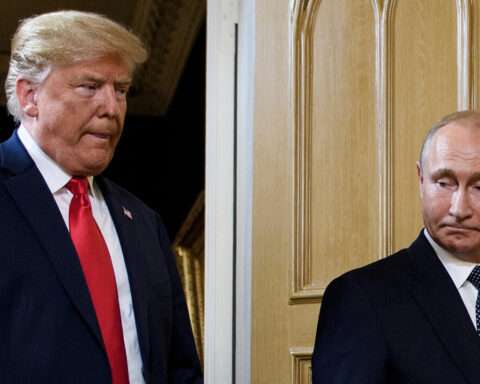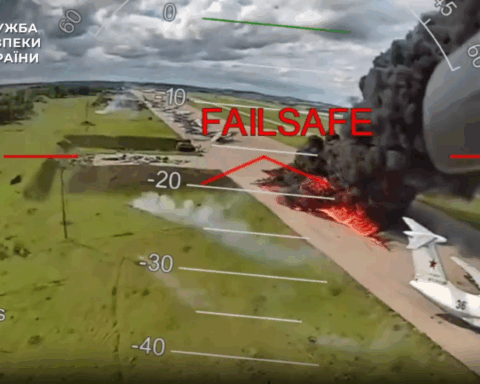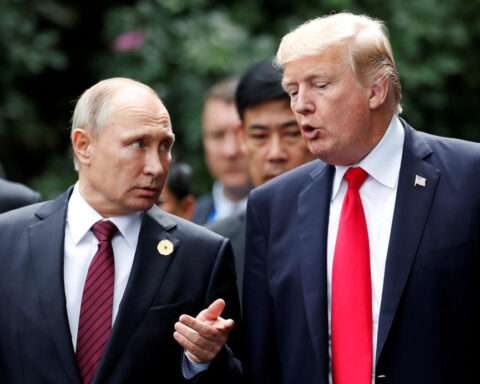President Joe Biden says the United States will soon move a small number of U.S. troops to Eastern European and NATO countries as fears continue to mount that a Russian troop buildup near Ukraine’s borders could be a prelude to an invasion.
“I’ll be moving U.S. troops to Eastern Europe and the NATO countries in the near term. Not too many,” Biden said when asked about a troop deployment on January 28 after returning to Washington from a speech in Philadelphia.
The Pentagon earlier this week placed about 8,500 U.S. troops on standby for possible deployment to Europe amid Moscow’s military buildup, which has moved more than 100,000 Russian troops to regions north, east, and south of Ukraine’s borders.
U.S. Defense Secretary Lloyd Austin said earlier that Russian President Vladimir Putin has all the military capabilities ready to act against Ukraine and it now comes down to a political decision on what action Moscow will take.

“While we don’t believe that President Putin has made a final decision to use these forces against Ukraine, he clearly now has that capability,” Austin told reporters.
He said there are multiple options available, “including the seizure of cities and significant territories, but also coercive acts and provocative political acts like the recognition of breakaway territories.”
The Kremlin has said Russia would study the written responses submitted by the United States and NATO concerning Moscow’s demands on security guarantees and will then “decide on further actions.”
Russia is demanding a major restructuring of Europe’s security architecture in exchange for a de-escalation of the crisis over Ukraine. The United States and NATO have largely rejected the demands, including the call to permanently shut the door on membership for Ukraine and other former Soviet republics.
NATO chief Jens Stoltenberg, speaking at an Atlantic Council forum on January 28, said the alliance was ready to step up its presence in Eastern Europe to reassure allies and prove its resolve.
Stoltenberg, however, noted that at this point, there is “no certainty” that Russia plans to invade Ukraine.
Earlier on January 28, U.S. Ambassador to Moscow John Sullivan said Washington was now waiting for Russia’s response to its written proposals for a diplomatic path out of the Ukraine crisis, voicing hope that a meeting between American and Russian diplomats could then follow.
Sullivan said diplomacy was the only way forward, but warned that could only happen if Russia starts dismantling its buildup near the Ukrainian border.
“If I put a gun on the table and say that I come in peace, that’s threatening,” Sullivan told an online briefing.
He also warned that economic sanctions would be just one part of the West’s response if Russia were to invade Ukraine, saying that other measures would include export controls, greater defense of allies in Europe, and preventing the Nord Stream 2 natural gas pipeline from Russia to Germany from operating.
U.S. officials have indicated other possible punitive measures against Moscow, such as disconnecting Russia from the SWIFT system of global bank transfers.
Sullivan also said the size of the Russian military buildup on Ukraine’s borders would allow an invasion with little warning.
He added that “what the Russian government has said publicly is that it has no intention to invade Ukraine, but the facts on the ground tell a much different story.”
His comments came after Russian Foreign Minister Sergei Lavrov’s reassurances that it won’t be Russia’s decision to start a war against Ukraine — but with the caveat that Moscow will not allow its interests to be “ignored.”
In an interview with Russian radio stations, Lavrov said he expected to meet U.S. Secretary of State Antony Blinken in the coming weeks for a new round of talks.
Speaking to reporters in Kyiv, Ukrainian President Volodymyr Zelenskiy called for calm, and appeared to downplay the urgency of the threat.
“I don’t consider the situation now more tense than before. There is a feeling abroad that there is war here. That’s not the case,” he said January 28. “I am not saying an escalation is not possible…(but) we don’t need this panic.”






